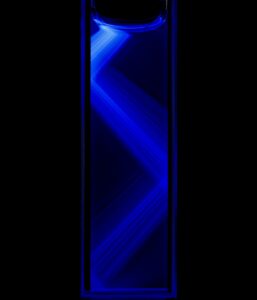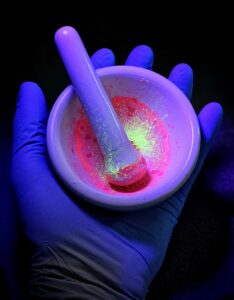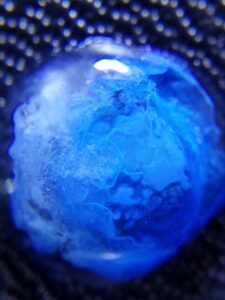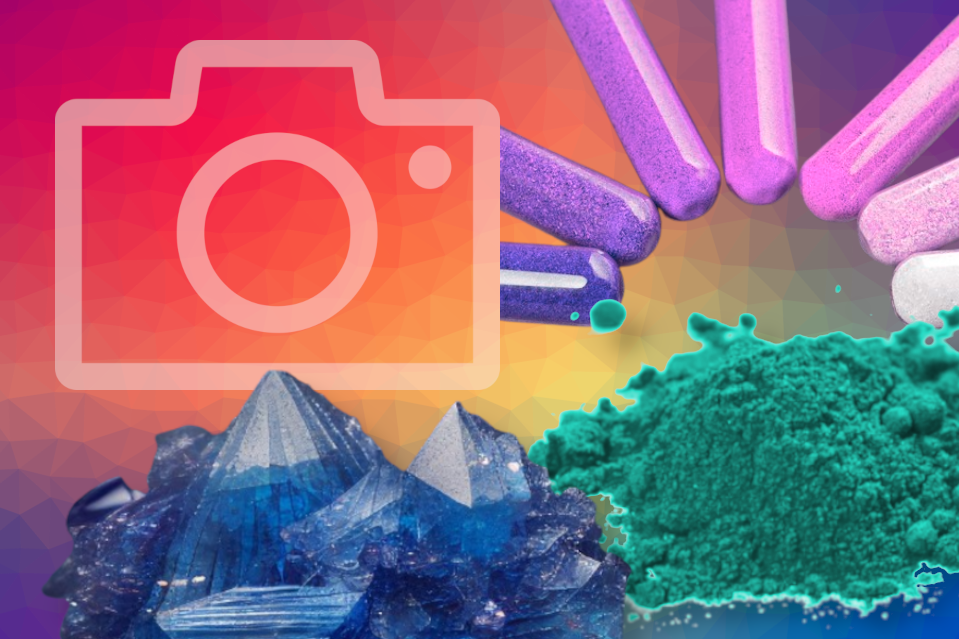This summer, we challenged you to share your personal perspective of chemistry through photos showing your creativity and enthusiasm for science. We were looking for beautiful, creative, attention-grabbing, visually striking, and/or thought-provoking entries from any setting chemistry plays a role in—be it the lab, the classroom, or everyday life.
A big thank you to everyone who participated and sent in photos and to all those who voted for the popular prize. Choosing the winners was not easy—we were thrilled at how many creative and beautiful photos you submitted.
The Winners
The first prize goes to “Reflections” by Borys Osmialowski from Nicolaus Copernicus University, Toruń, Poland.

The photograph presents a total internal reflection of light passing through a solution of fluorescent dye. Borys Osmialowski is a chemist, and his hobby is photography. The picture was taken using an Olympus OM-1 with a 60 mm macro lens attached, and the solution was prepared in standard 1×1 cm cuvette.
Light emitters are Osmialowski’s current scientific interest, and his research is concerned with optimizing the photophysical properties of fluorescence difluoroborate dyes. His team aims to cover the whole visible spectrum when one considers absorption and emission in the one-photon regime, and achieve similar results for the infrared part of the spectrum by optimizing dyes for multi-photon absorption. The picture shows the solution of the dye that has a blue-shifted emission, a feature needed by the current OLED industry.
According to Osmialowski, his interest in chemistry dates back to his early childhood, and it is still fun to enter the laboratory to synthesize small organic molecules. He is fascinated by how many interesting and useful molecules, such as OLED emitters, spectral probes for fluorescence guided surgery, or active pharmaceutical ingredients, can be obtained using the limited number of elements routinely considered in organic synthesis.
The second prize and the popular prize go to “Candy Mechanochemical Reaction” by Maciej Majdecki, Institute of Organic Chemistry, Warsaw, Polish Academy of Sciences.

The photograph captures Maciej Majdecki’s fascination with vibrant compounds and the innovative, unconventional methods employed in modern chemistry. A prime example is mechanochemistry—a technique that enables the transformation of reaction components into valuable products through grinding or milling, all without the use of solvents.
Majdecki’s current research focuses on the creation of innovative materials for organic electronics. “In my laboratory, I work with a diverse array of chromophores, each exhibiting unique properties and interactions with light. Among these, polycyclic aromatic derivatives stand out as a particularly versatile class of organic compounds.” In addition to uses in organic electronics, these compounds can be useful, e.g., for enhancing the efficiency of solar cells or in catalysis.
Majdecki uses social media to share his passion for promoting organic chemistry in a way that combines science with artistic sensibility and aesthetic beauty. “You can find me on X as @MajdeckiMaciek and on Instagram as @luminescent_chemist. Every day, I document the wonders of chemistry, captured in photos and videos that I create while working in the laboratory. For me, popularizing science is primarily about inspiring and motivating young people to explore the fascinating world of chemistry. Chemistry is not just a theoretical field, but a science full of colors, extraordinary phenomena, and discoveries that have a real impact on our daily lives and the future of technology and innovation.”
The third prize goes to “A Microcosmic Blue Planet” by Michele Rizzello, Switzerland.

The photograph is a macro shot capturing the reaction of sodium hydroxide with copper sulfate, producing copper hydroxide as a blue precipitate in a drop of water. According to Michele Rizzello, who teaches chemistry, “the beauty found in this chemical reaction in a drop of water reflects the potential for a beautiful planet on a sustainable global scale.” The image is part of a wider project to integrate artistic creation and creativity in general into the classic academic chemistry curriculum.
Rizzello has a background in chemical engineering and organic chemistry, with a focus on computational chemistry. He spent part of his career outside the laboratory in the software development field. In his current teaching position, he conducts a macrophotography experiment with his students every year, capturing images of precipitation reactions in a drop of water using a simple setup with a macro lens for cell phones. The images are posted on an Instagram profile (@gyetolab) and the image with the most likes wins a small prize.
Rizzello states, “what fascinates me most about chemistry is trying to reveal the inner workings of the world around us. […] I’m honored to have my little world (which fits into a drop of water) featured in ChemistryViews, which I really enjoy.”
Congratulations to the winners!





Congratulations to all the winners. Your photograph exemplifies “vibrant chemistrty”